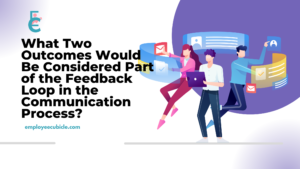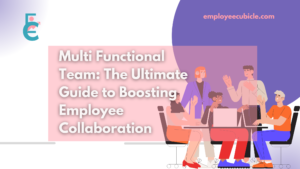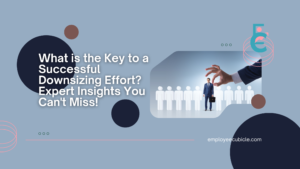How are employee development practices strategic? Ever wondered? Whether you’re an employee aiming for growth or an HR professional shaping careers, this concept is crucial. In a world where training isn’t just a checklist item but a strategic tool, understanding its depth can be game-changing. Stick around, and by the end of this post, you’ll view every training session or workshop in a whole new light. Ready for some insights?
What are employee development strategies?
Behind the thriving pulse of every successful organization is a well-nurtured and continuously evolving workforce. This evolution doesn’t happen by chance. It’s meticulously orchestrated through employee development strategies. But what exactly are these strategies and how are employee development practices strategic in nature?
Employee development strategies are methodical plans set in motion by companies to bolster the skills, knowledge, and capabilities of their employees. These strategies are more than just short-term tactics; they’re a roadmap guiding employees toward long-term growth and organizational success.
What Are the Different Types of Employee Development Programs?

In the bustling landscape of the corporate world, the growth and evolution of employees stand paramount. It’s no longer about filling a seat; it’s about nurturing that seat’s occupant. But if we delve deeper, the pivotal question arises: “How are employee development practices strategic?” To unwrap this mystery, we need to first navigate through the multifaceted world of employee development programs.
Traditional and Formal Training:
- Classroom-based sessions: Rooted in traditional pedagogy, these sessions offer a systematic curriculum, often dictated by an expert. They provide foundational knowledge which is critical for beginners.
- Workshops: These are condensed capsules of knowledge, focused on enhancing specific skills or learning new tools in a short span.
- Seminars: Platforms where thoughts are exchanged, seminars invite experts to shed light on niche topics, giving attendees a deeper understanding.
On-the-job Training
This methodology weaves learning into daily tasks, making the process seamless.
- Shadowing: New entrants watch and learn, observing the intricacies of tasks performed by seasoned professionals, soaking in tacit knowledge.
- Job rotation: This approach breaks monotony, providing employees exposure to various roles, broadening their organizational perspective.
Mentorship and Coaching
This personalized approach crafts learning paths tailored for the individual.
- One-on-one mentoring: Here, wisdom meets curiosity. Seasoned professionals share their experiences, guiding the next generation.
- Group coaching: Harnessing collective intelligence, individuals learn in groups, benefiting from shared experiences and diverse viewpoints.
E-learning and Technology-Driven Methods
Harnessing the power of digital, these methods redefine flexibility in learning.
- Webinars: Virtual seminars that transcend geographical boundaries, bringing global expertise to one’s screen.
- Online courses: These modules, often self-paced, offer a buffet of knowledge, allowing individuals to pick what suits their needs.
Soft Skills Development
Beyond technical prowess, these shape an individual’s interpersonal skills.
- Communication workshops: Here, individuals refine their articulation skills, learning the art of effective communication.
- Leadership programs: These initiatives sculpt potential leaders, inculcating strategic thinking and management acumen.
Peeling back the layers of these programs, the intricate design reveals how employee development practices are strategic. Each program, with its unique offering, ensures comprehensive growth. Organizations must cleverly select and design these programs, aligning them with both the employee’s aspirations and the company’s vision.

How do you create an employee development strategy?
The business ecosystem is dynamic, constantly morphing and presenting new challenges. To navigate this, organizations must ensure that their most vital asset – their workforce – is continuously evolving. This brings us to a pressing inquiry: How are employee development practices strategic? To fully grasp this, it’s essential to understand the careful orchestration of an employee development strategy.
- Thoroughly Assess the Current Scenario:
- Skill Audit: Start by mapping out the skills that currently exist within the team. Where does the team excel? What areas require bolstering?
- Employee Feedback: Engage in open dialogues. What are the aspirations of the workforce? What training do they feel would benefit them the most?
- Crystallize Clear Objectives:
- Harmonize with Business Goals: The roadmap for employee growth should echo the organization’s larger ambitions. If the goal is market diversification, the strategy should equip employees with skills to navigate diverse markets.
- Individual Growth Pathways: While steering towards organizational success, it’s paramount to ensure personal development isn’t overshadowed.
- Handpick the Right Development Programs:
Tailor the training to cater to various roles and differing expertise levels:
- On-the-Job Training: Immerse employees in real-world tasks, offering experiential learning that’s immediately applicable.
- Mentorship Programs: Create alliances between newcomers and veterans, fostering a culture of shared wisdom.
- E-Learning Modules: Harness the power of digital platforms, offering a plethora of courses that cater to varied learning styles and paces.
- Cultivate a Rich Learning Culture:
Beyond strategy, the environment plays a pivotal role:
- Top-Down Learning Advocacy: When leadership champions the cause of learning, it resonates deeper within the organization.
- Feedback Mechanisms: Implement platforms where employees can voice their opinions about the development programs, ensuring they feel heard and valued.
- Seamlessly Integrate Technology:
In our technologically driven era, smart tools can significantly enhance learning experiences:
- Learning Management Systems (LMS): Comprehensive platforms that centralize courses, enabling employees to learn at their convenience.
- Data-Driven Insights: Use analytical tools to monitor the effectiveness of training sessions, refining strategies based on tangible data.
- Continually Measure and Refine:
- Key Performance Indicators (KPIs): Initiate metrics to gauge the success of the strategy. Look beyond participation numbers; focus on skill application in real-world scenarios.
- Strategy Evolution: The business world isn’t static; nor should be the development strategy. Periodically reassess and adapt to ensure alignment with changing goals and environments.
By methodically unwrapping each layer, we get a clearer insight into how employee development practices are strategic. It’s a cohesive blend of individual upskilling, aligned with the company’s overarching vision.
To encapsulate, the creation of an effective employee development strategy is akin to crafting a masterpiece. Each brushstroke, each color choice is deliberate, aiming to bring out a cohesive, vibrant picture. By dedicating resources and time to this craft, organizations not only uplift individual careers but also set themselves on a trajectory of sustained success.
What are the four 4 approaches to employee development?
In the journey of personal and professional growth, employees traverse various pathways that equip them with the tools they need to thrive. Central to this are the structured approaches that organizations adopt to nurture this growth. But one might wonder, how are employee development practices strategic? A closer look at the primary methods reveals the genius behind them.
- Education: Often the first thing that comes to mind when thinking about development, education plays a foundational role:
- Formal Courses: These often involve enrolling in courses at universities or specialized institutions.
- Workshops and Seminars: Shorter sessions focused on specific skill sets or knowledge areas.
- E-Learning Platforms: Digital learning mediums that offer flexibility and a vast array of topics.
- Exposure: Growing through experiences and interactions:
- Networking: Building relationships within and outside the organization to gain new perspectives.
- Job Rotation: Moving through different roles or departments to understand the broader workings of the company.
- Cross-training: Learning the skills of a different role while staying in one’s current position, broadening one’s skill set.
- Experience: Learning by doing:
- Challenging Assignments: Tackling tasks that push employees out of their comfort zones, urging them to apply and expand their skills.
- Project Lead: Taking the helm of a project, which fosters leadership and management capabilities.
- On-the-Job Training: Practical training that’s immediately relevant to one’s role.
- Environment: The surrounding atmosphere plays a pivotal role in molding an individual:
- Feedback-Rich Culture: An environment where constructive feedback is encouraged and celebrated.
- Collaborative Spaces: Promoting team efforts, which spark creativity and collective problem-solving.
- Supportive Leadership: Leaders who not only guide but also inspire, creating a ripple effect of growth and development throughout the organization.
Connecting the dots, it becomes clear how employee development practices are strategic in nature. These approaches aren’t random; they’re carefully chosen pathways designed to holistically nurture an individual. Each one offers unique learning experiences, ensuring that employees are well-rounded, adaptable, and primed for success.
The four approaches to employee development aren’t just methods; they’re pillars that uphold the structure of continuous learning and growth. When strategically integrated into the fabric of an organization, they ensure that every employee, irrespective of their role or level, has a clear trajectory towards personal and professional development.
How are employee development practices strategic?
The world of employee development is like a treasure trove, offering riches that extend far beyond individual growth. This treasure chest isn’t filled with gold or gems, but with the strategic benefits that propel organizations toward success.

Enhanced Organizational Performance:
- Increased Productivity: An enriched workforce executes tasks more efficiently and effectively.
- Quality Output: Development programs foster a commitment to excellence, reducing errors and enhancing overall output.
Talent Attraction and Retention:
- Talent Magnet: Organizations that prioritize employee growth become beacons for talented individuals seeking a platform to shine.
- Reduced Turnover: When employees see a clear path for personal and professional development within a company, they’re more likely to stay.
Agility in a Changing Market:
- Quick Adaptation: Well-trained employees are agile, swiftly adapting to new technologies and market dynamics.
- Diverse Skill Set: Continuous development cultivates a diverse skill set, enabling employees to tackle a wide array of challenges.
Fostering a Positive Organizational Culture:
- Employee Engagement: Development leads to engaged employees who are deeply invested in their roles and the success of the company.
- Collaborative Environment: The culture of learning often encourages collaboration as employees share their knowledge and join forces to address challenges.
Financial Benefits:
- Reduced Hiring Costs: Developing internal talent reduces the need for extensive external recruitment, saving on hiring expenses.
- Increased ROI: Every dollar invested in employee development translates into improved performance and greater profitability.
Future-Proofing the Organization:
- Leadership Pipeline: Continuous development ensures a steady stream of capable leaders ready to take on greater responsibilities.
- Innovation Boost: Fostering a culture of learning spurs creativity and innovation, ensuring the organization remains at the forefront of its industry.
When we look at the bigger picture, these strategic benefits underscore that employee development isn’t just an investment in the individual but in the very core and future of the organization. It’s about aligning individual aspirations with the collective vision of the company, creating a harmonious synergy that fuels growth and success.
How is Employee Development Strategically Aligned with Organizational Goals?
Picture an orchestra: each musician plays their part, contributing to the magnificent symphony. Employee development in an organization functions similarly. It’s not just about individual growth; it’s about ensuring that each player’s tune harmoniously aligns with the organization’s grand symphony.
- Bridging Skill Gaps:
- Needs Assessment: By identifying the skills currently present and comparing them to future organizational goals, clear gaps can be spotted.
- Tailored Training: Based on these gaps, customized training programs are designed to ensure that employees possess the skills needed for the organization’s future direction.
- Driving Innovation:
- Nurturing Creativity: Development programs can foster creativity, encouraging employees to think outside the box.
- Future Vision: As employees are trained in the latest technologies and methodologies, they’re better equipped to introduce innovative solutions that propel the company forward.
- Enhancing Organizational Flexibility:
- Cross-training: Employees trained in multiple areas can adapt to varied roles, ensuring the organization remains resilient in the face of changes.
- Broadened Perspectives: Exposure to different parts of the organization can lead to fresh ideas and diverse solutions.
- Building a Leadership Pipeline:
- Leadership Programs: By nurturing future leaders, the organization ensures a seamless transition and continuity in achieving long-term goals.
- Succession Planning: A well-trained cadre of employees ensures there’s no leadership vacuum, guaranteeing that the organization’s strategic vision remains uncompromised.
- Cultivating a Strong Organizational Culture:
- Shared Vision: Consistent training and development sessions ensure everyone is on the same page, fostering a cohesive organizational culture.
- Unified Direction: As employees grow and evolve in a direction that aligns with the organization’s vision, there’s a collective movement towards overarching goals.
When one steps back and views the grand tapestry, the strategic alignment becomes evident. Employee development isn’t an isolated function. It’s intricately woven into the very fabric of the organization’s strategy, ensuring that individual growth paves the way for collective success.
What Are The Challenges In Implementing Strategic Employee Development
Employee development, while immensely beneficial, isn’t without its hurdles. The path to building a strategically aligned program is akin to navigating a maze. It’s essential to recognize these challenges so you can find a clear route to success.
- Limited Resources:
- Budget Constraints: Developing and delivering training programs can be expensive.
- Time Scarcity: Both employees and trainers may have limited time to invest in learning and development.
- Resistance to Change:
- Comfort Zones: Employees might be hesitant to leave their comfort zones, even if it’s for their long-term benefit.
- Fear of Inadequacy: Some may fear that the skill development will expose gaps in their current capabilities.
- Measuring Effectiveness:
- Lack of Clear Metrics: Determining the impact of development initiatives can be challenging without clear, measurable goals.
- Tracking Progress: Monitoring how training translates into improved job performance isn’t always straightforward.
- Balancing Individual and Organizational Goals:
- Misalignment: The individual aspirations of employees might not always perfectly align with the organizational goals.
- Finding Common Ground: Striking a balance that nurtures both personal growth and organizational success can be complex.
- Keeping Programs Relevant:
- Rapid Changes: In fast-evolving industries, training materials can become outdated quickly.
- Sustainability: Ensuring that development programs remain viable and valuable over time requires ongoing effort.
- Overcoming Resistance from Leadership:
- Traditional Mindsets: Some leaders may resist modern development practices, sticking to conventional methods.
- Time Constraints: Busy executives might perceive training as a time-consuming endeavor.
Recognizing these challenges is a crucial step in addressing them. While it may not make the maze any less complicated, it equips you with the knowledge to navigate it more effectively.
The journey of strategic employee development isn’t without its roadblocks. However, understanding and proactively addressing these challenges paves the way for a more effective and impactful development program.
Conclusion
Employee development isn’t just about individual growth. Its strategic alignment with organizational goals magnifies its importance in today’s business landscape. When we ask, “How Are Employee Development Practices Strategic?” we see it’s a blend of personal aspirations and company objectives, fostering mutual success.
Found this insightful? Share with your network and let us know your thoughts below!



